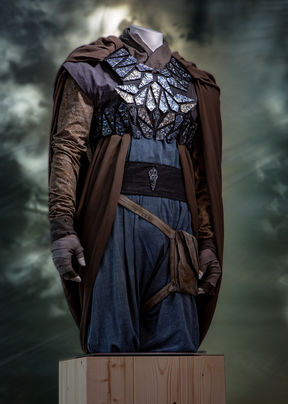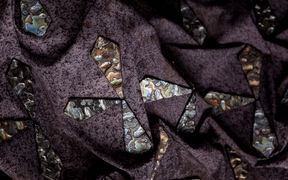
When
Where
Textile design plays a central role in the creation of films and live stage performances: Costumes visually convey the story of the character.
Costumes are linked to the global fashion industry, which produces 8-10% of global CO2 emissions (4-5 billion tonnes annually). Though it has considerably smaller impacts, if the film industry adopted sustainable textiles design, best practices would attract consumer interest and encourage adoption in other industries.
Sustainable costume design is still in its early days.
Despite efforts to move to 'greener' processes, stage and film productions still make costumes in traditional ways with little regard for their impact on the environment or employees. Toxic materials like leather glues or solvent-based paints for plastic are often used to create costumes. Further, most are made of non-recyclable or reusable materials that end up in a landfill.
Considering a film production could only run 3 to 6 months, significant resources are dedicated to creating new costumes that appear only briefly. While digital technology has a big impact on the industry and is drastically changing how movies are made, costume design remains a specialized trade. It relies on traditional techniques and materials and requires a great deal of hand work to create custom costumes for specific bodies and specialized uses.
The exhibition features textiles, materials, and manufacturing methods that contribute to more sustainable practices and circular economy models in costume making.
Artefacts combine new materials and technologies developed by the Biobased Colloids and Materials (BiCMat) research group, led by Prof. Orlando Rojas at Aalto, with Urs Dierker’s two decades of expertise and research in textile design and costume making. More info on the project.
The artefacts displayed bring together textiles with current research about sustainability, new technology in the clothing sector, and recent analyses of the entertainment sector’s carbon footprint.
They incorporate traditional techniques of dyeing and printing with new technologies like 3D scanning, computer-aided printing, and the use of bacteria and mycelium to create sustainable surface designs and colours. The fabrics are made of natural and manufactured fibres, including wool, silk, cotton, and viscose. The cloth is dyed with natural dyes and dye fixatives, some found in the Finnish woods. These natural colourants are also used to dye the cellulose-based printing inks for screen printing and computer-aided 2.5D printing directly onto the fabric. Structural colours, made of plant cellulose, show metallic shimmer and iridescent surfaces on fabric. The technology behind structural colours can be seen in the Shimmering Wood exhibition by Noora Yau and Konrad Klockars in Väre in the V1 Gallery.
The exhibition design is based on the balance of 'characters', and each showcases the importance of textile and surface design as tools in film and theatre to create character clothing and to make the viewer believe that what they see is real.
Our project illustrates that cellulose-based biomaterials can be used to create new hybrid- and mono-materials for textile design with potential future applications in film and theatre.
The Research Project Team:
Led by Prof. Orlando Rojas: textile designer Urs Dierker, Dr. Alp Karakoc, Dr. Blaise Tardy, Dr. Bruno Dufau Mattos, Dr. Guang Chu, Dr. Marco Beaumont, Dr. Maryam Borghei, Bin Zhao, Janika Lehtonen, Ling Wang, Luiz Garcia Greca, Mahdi Rafiee, Roozbeh Abidnejad, Rubina Ajdary, Yang Meng, Dr. Heidi Henrickson, and Konrad Klockars and Noora Yau of Structural Colour Studio
Naturally Dramatic
A science-art project aimed at textiles and materials that contribute to more sustainable practices in costume making by using cellulose-based materials.

Close the loops
Making things and manufacturing processes produce pollution and environmental degradation, draining natural resources.







